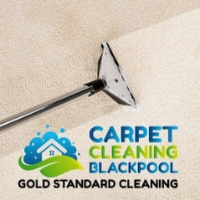Blackpool
Blackpool is a large town and seaside resort in Lancashire, England. Located on the northwest coast of England, it is the main settlement within the borough also called Blackpool. The town is by the Irish Sea, between the Ribble and Wyre rivers, and is 27 miles (43 km) north of Liverpool and 40 miles (64 km) northwest of Manchester. At the 2011 census, the unitary authority of Blackpool had an estimated population of 139,720, while the wider built-up area (which also includes areas outside the unitary authority) had a population of 239,409. This makes it the second-largest in Lancashire, as well as the fifth-most populous urban area in northwest England after Manchester, Liverpool, Preston, and Birkenhead.
Throughout the Medieval and Early Modern period, Blackpool was a coastal hamlet in Lancashire's Amounderness Hundred and remained as such until the mid-18th century, when it became fashionable in England to travel to the coast in the summer to improve well-being. In 1781, visitors attracted to Blackpool's 7-mile (11 km) sandy beach were able to use a new private road, built by Thomas Clifton and Sir Henry Hoghton. Stagecoaches began running to Blackpool from Manchester in the same year, and from Halifax in 1782. In the early 19th century, Henry Banks and his son-in-law John Cocker erected new buildings in Blackpool, which increased its population from less than 500 in 1801 to over 2,500 in 1851. St John's Church in Blackpool was consecrated in 1821.
Blackpool rose to prominence as a major centre of tourism in England when a railway was built in the 1840s connecting it to the industrialised regions of northern England. The railway made it much easier and cheaper for visitors to reach Blackpool, triggering an influx of settlers; in 1876, Blackpool was incorporated as a borough, governed by its own town council and aldermen. In 1881, Blackpool was a booming resort with a population of 14,000 and a promenade complete with piers, fortune-tellers, public houses, trams, donkey rides, fish and chip shops, and theatres. By 1901, the population of Blackpool was 47,000, by which time its place was cemented as "the archetypal British seaside resort". By 1951, it had grown to 147,000 people.
Shifts in tastes, combined with opportunities for British people to travel overseas, affected Blackpool's status as a leading resort in the late 20th century. Its urban fabric and economy both remain relatively undiversified and firmly rooted in the tourism sector, and the borough's seafront continues to attract millions of visitors every year. Blackpool's major attractions and landmarks include Blackpool Tower, Blackpool Illuminations, Pleasure Beach, Blackpool Zoo, Sandcastle Water Park, the Winter Gardens, and Blackpool Tramway (the UK's only surviving first-generation tramway).
Early history
View of Blackpool, 1784
A 13,500-year-old elk skeleton was found with man-made barbed bone points (probably from spears) on Blackpool Old Road in Carleton in 1970. Now displayed in the Harris Museum this provided the first evidence of humans living on the Fylde as far back as the Palaeolithic era. The Fylde was also home to a British tribe, the Setantii (the "dwellers in the water") a sub-tribe of the Brigantes, who from about AD80 were controlled by Romans from their fort at Dowbridge, Kirkham. During the Roman occupation the area was covered by oak forests and bog land.
Some of the earliest villages on the Fylde, which were later to become part of Blackpool town, were named in the Domesday Book in 1086. Many of them were Anglo-Saxon settlements. Some though had 9th and 10th century Viking place names. The Vikings and Anglo-Saxons seem to have co-existed peacefully, with some Anglo-Saxon and Viking placenames later being joined together – such as Layton-with-Warbreck and Bispham-with-Norbreck. Layton was controlled by the Butlers, Barons of Warrington from the 12th century.
In medieval times Blackpool emerged as a few farmsteads on the coast within Layton-with-Warbreck, the name coming from "le pull", a stream that drained Marton Mere and Marton Moss into the sea close to what is now Manchester Square. The stream ran through peatlands that discoloured the water, so the name for the area became "Black Poole". In the 15th century the area was just called Pul, and a 1532 map calls the area "the pole howsys alias the north howsys".
In 1602, entries in Bispham Parish Church baptismal register include both Poole and for the first time blackpoole. The first house of any substance, Foxhall, was built toward the end of the 17th century by Edward Tyldesley, the Squire of Myerscough and son of the Royalist Sir Thomas Tyldesley. An Act of Parliament in 1767 enclosed a common, mostly sand hills on the coast, that stretched from Spen Dyke southwards. Plots of the land were allocated to landowners in Bispham, Layton, Great Marton and Little Marton. The same act also provided for the layout of a number of long straight roads that would be built in the areas south of the town centre, such as Lytham Road, St. Annes Road, Watson Road and Highfield Road.
.png)


(1).png)